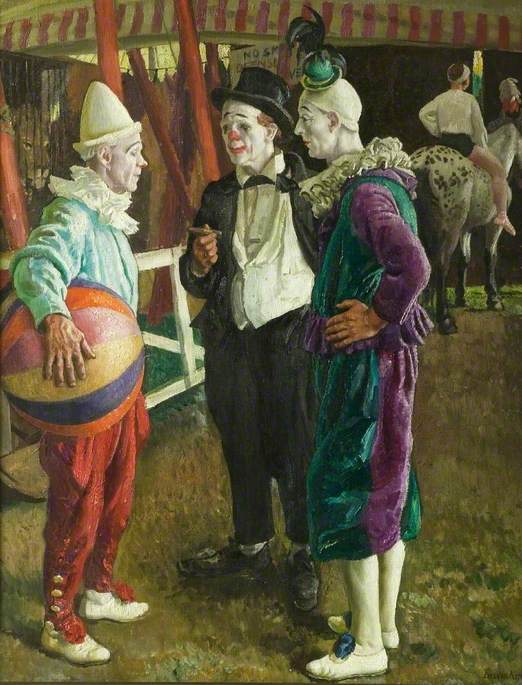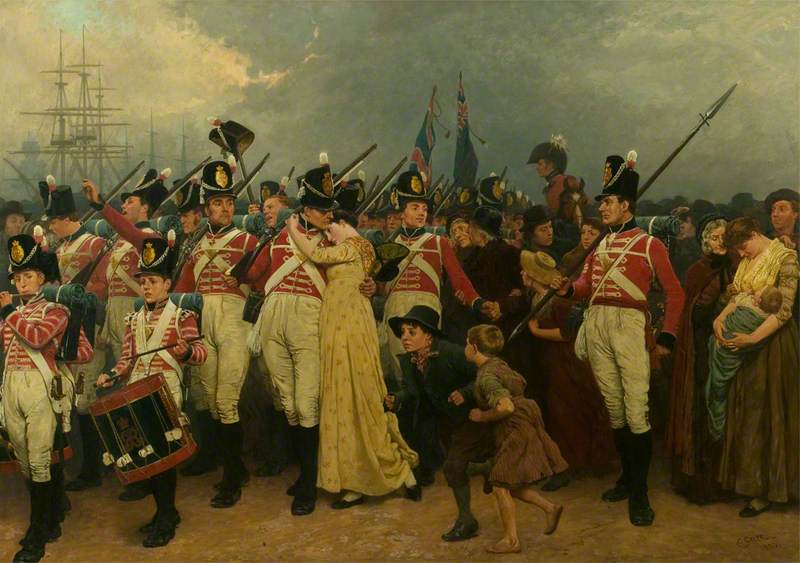Leicester Museums have given visitors the opportunity to explore the world since 1849. Nationally important objects and collections include Charnia, the first fossil ever described to have come from Precambrian rock, our internationally renowned collection of German Expressionist Art, and the most comprehensive collection of Picasso ceramics in the country, donated by the Attenborough family.
Art Unlocked is an online talk series by Art UK in collaboration with Bloomberg Philanthropies. This Curation is based on a talk by Mark Simmons, Audience Development and Engagement Manager at Leicester Museums & Galleries, on 16th February 2022. You can find a recording at: https://youtu.be/KbOBgNrmsRA
Neuschul was born into a Jewish family in Aussig, a small town in what is now the Czech Republic. In 1926 he joined the Novembergruppe and became a radical socialist. His powerful, provocative painting of ordinary workers, black people, gypsies, and the unemployed celebrated the equality and dignity of all humankind. In 1933 an exhibition of his paintings was closed by the Nazis, with several works being seized and burnt. After exhibiting and painting in Russia, several of Neuschul’s paintings on exhibition in Aussig were vandalised and disfigured with swastikas. Neuschul was now in danger due to his race, for his politics, and for his art. He escaped the Nazis on the last train out of Czechoslovakia in 1937.
Ernst Neuschul (1895–1968)
Oil on canvas
H 100.5 x W 65.5 cm
Leicester Museums and Galleries
Hogarth joined the academy of the society painter James Thornhill in 1724, and almost immediately began to receive commissions for family group portraits, known as conversation pieces.
The painting shows the family in what are believed to be their London apartments at Charterhouse Square during 1730. William Wollaston, a wealthy landowner, and Governor of the Bank of England, stands at the centre of the picture. His wife, Elizabeth, sits at a table wearing white, her hand placed over a teapot signifying her as hostess. A Black servant behind the group to the left hands a guest a cup of tea.
Among the other sitters are Francis Fauquier, later to become Governor of the Foundling Hospital, and Sarah Johnson, a wealthy heiress.
William Hogarth (1697–1764)
Oil on canvas
H 102.5 x W 126.4 cm
Leicester Museums and Galleries
.

Dame Laura Knight was a realist painter who broke into the traditionally male-dominated British art establishment. Knight's interest in the circus began in the early 1920s after she attended the Bertram Mills Circus in West London. This interest resulted in several major paintings during the 1920s in which Knight depicted the everyday lives of circus performers. In these she aimed to reveal the true personalities behind the colourful costumes and greasepaint.
In 1929 Knight decided to devote her time entirely to drawing scenes from daily life under the Big Top, and joined the Mills and Carmo Circus Company on tour for the summer season. The clowns in this subsequent painting were her friends Randy, Marba, and Joe Bert.
Laura Knight (1877–1970)
Oil on canvas
H 77 x W 63.5 cm
Leicester Museums and Galleries
RK Sharma is a contemporary Indian artist who employs the ancient art methods of the miniaturists of the city of Krishnagar (West Bengal). He works in a family tradition which has been passed down from father to son over many generations. He currently lives and teaches in Jaipur, India
This style of Indian art is typical of the traditional religious and pastural works which inspired the Indian modernists, especially Rabindranath Tagore, to establish the Bengal School of Art. This movement reclaimed Indian art from European influences gained during British rule prior to Independence in 1947.
This work was exhibited at the Open Exhibition in 2001 and was purchased for the museum by the City of Leicester Museums Trust.
Ram Krishan Sharma
Tempera on silk
H 24 x W 31 cm
Leicester Museums and Galleries
This portrait of Sir David Attenborough was inspired by his 1996 television series about Birds of Paradise, and incorporates numerous images of these birds into its background.
Sir David Attenborough was a regular museum visitor in his childhood, having grown up nearby. He was especially inspired by the museum’s Charna fossil, the first Precambrian fossil to be identified. Talking in 2010 of finding fossils in his youth Sir David said that “of course I wanted to know what they were. So, I brought them here to the Museum… The influence of this museum had a profound effect on my career”.
Bryan Organ (b.1935)
Acrylic on canvas
H 101.6 x W 152.4 cm
Leicester Museums and Galleries
Green was a genre artist who, despite a considerable talent for working in oils, made his living as an illustrator.
This work depicts British soldiers leaving for Belgium prior to the Battle of Waterloo in 1815. It was inspired by a traditional folk song of the same name in which a soldier wonders if he’ll ever see his sweetheart again. The work is full of emotional detail; a girl clinging to her lover, excited children running beside equally young, but fearful, drummer boys, and old hands reprimanding the younger, less experienced men.
There are several historical inaccuracies in the soldier’s uniforms, but Green was more interested in showing a sentimental view of the past than in depicting a specific event.
Charles Green (1840–1898)
Oil on canvas
H 129.5 x W 183 cm
Leicester Museums and Galleries










